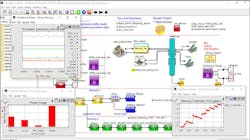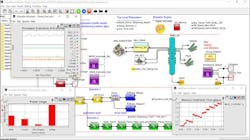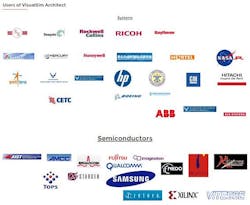Addressing Integrated Modular Avionics architecture challenges with early system-level modeling/simulation
Advances in semiconductor technologies have significantly influenced modern avionics architectures. Yet, migration from a Federated Architecture (FA) to Integrated Modular Avionics (IMA), a more sophisticated and integrated architecture, is not a cake walk.
In Federated Architecture, integrated hardware and software components realize mostly independent or loosely interconnected functions. The basic concept behind IMA is sharing the common set of “cabinets” with ARINC 653 specifications that are connected simultaneously with other secondary equipment through communication channels based on ARINC 664 or AFDX specifications. Each cabinet is a high-power computing hub which substitutes a number of avionics applications. Each cabinet has an adequate processing and interface capability to maintain the required integration of avionics functionality.
Integration of software components in a distributed system realizing a complex functional behavior and characterized by safety, time, and reliability constraints requires a much tighter control on the hardware components and execution of applications on top of target platforms. Presence of multicore processor and shared memory architectures add additional complexity. Analyzing the results of the composition -- whether by modeling and simulation, formal methods, or methods for exploring the architecture and optimizing the configuration – is essentially a necessity during early phases of the design cycle.
The IMA architecture gives rise to many interrelated decisions that must be made by system architects. Among them are: how to assign software to hardware processors, amount of power consumed for each use case, reducing risk, scheduling tasks to ARINC 653 virtual machines, and determining the network bandwidth for the selected workload and processing.
There is a fundamental shift in the way these systems are specified, designed, implemented, and tested – requiring years to implement at its highest efficiency to maintain the high safety standards mandated in the avionics industry.
Changes not just in the technology migration, but also in the standards, business models, and certification strategies need to be considered before selecting a specific component or writing an application.
Mirabilis Design has worked with more than 20 avionics divisions by conducting early design space exploration of an avionics system on chip (SoC) to a complete IMA platform modeling and simulation including processor boards, input/output (I/O) boards, graphics, ARINC 664, ARINC 653 scheduling to explore design space and also performance and power analysis.
Mirabilis Design is hosting a webinar on 3 March 2016 to discuss how many of these challenges can be addressed with early system-level modeling and simulation. Click here to register.
Is Integrated Modular Avionics (IMA) for you?
Ways to confirm before committing
The global avionics community is trying to replace numerous separate processors and line replaceable units (LRUs) with fewer and more centralized processing units -- moving to the Integrated Modular Avionics (IMA) architecture. The IMA architecture give rise to many interrelated decisions that must be made by system architects.
You might also like:
Subscribe today to receive all the latest aerospace technology and engineering news, delivered directly to your e-mail inbox twice a week (Tuesdays and Thursdays). Sign upfor your free subscription to the Intelligent Inbox e-newsletter at http://www.intelligent-aerospace.com/subscribe.html.
Connect with Intelligent Aerospace on social media: Twitter (@IntelligentAero), LinkedIn,Google+, and Instagram.
Intelligent Aerospace
Global Aerospace Technology NetworkIntelligent Aerospace, the global aerospace technology network, reports on the latest tools, technologies, and trends of vital importance to aerospace professionals involved in air traffic control, airport operations, satellites and space, and commercial and military avionics on fixed-wing, rotor-wing, and unmanned aircraft throughout the world.




